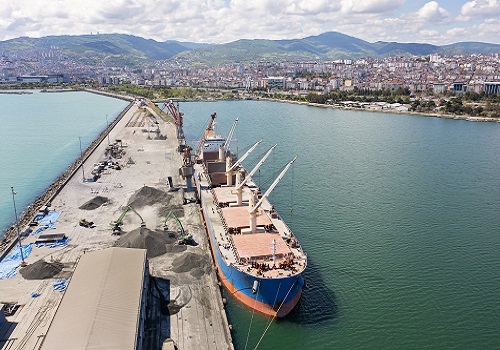Port of the Future: Automation`s Role in Efficiency with Jassper Shipping

Follow us Now on Telegram ! Get daily 10 - 12 important updates on Business, Finance and Investment. Join our Telegram Channel
In today's rapidly evolving digital landscape, automation and artificial intelligence (AI) are driving profound changes across numerous sectors, and the marine shipping industry is no exception. The incorporation of automation and AI technologies has ushered in a new era marked by enhanced efficiency and innovation within the shipping sector. These developments hold the promise of improving predictive capabilities and optimising the intricacies of shipping operations. Companies like Jassper Shipping are leading the charge in this transformative journey toward intelligent shipping, exemplifying the considerable potential and impact of these technologies on shaping the industry's future.
What were the Challenges faced by Shipping sector
before AI and Automation?
1. Inefficient Data Transfer: Previously, shipping companies relied on manual data transfer, which was
time-consuming and prone to delays, impacting both the shipping process and
service quality.
2. Poor Tracking: Tracking the location and status of cargo and vessels was a challenge,
hampering quick responses to delays, disruptions, or emergencies in the
shipping industry.
3. Complex Regulatory Compliance: Meeting international regulations and safety standards was costly and complex, involving extensive paperwork and oversight for shipping companies
How to Automate Shipping & AI's Role
Automating shipping processes is crucial in today's logistics landscape, with technology playing a pivotal role. By integrating and processing data from various sources, real-time demand forecasting and efficient inventory management can be achieved. This technology automates warehouse operations to ensure accuracy while reducing errors. Additionally, automated chatbots and virtual assistants improve customer service, while surveillance systems enhance cargo security. And it streamlines documentation and compliance procedures. With continuous learning capabilities, technology evolves to become increasingly efficient over time, making it an invaluable tool for modern shipping operations, promoting efficiency, sustainability, and competitiveness.
How Automation and AI is improving efficiency with Jassper Shipping
Utilising automated systems in shipping operations has significantly simplified the Complexities of the shipping process. Jassper Shipping, through its effective utilisation of AI and automation, offers customers a multitude of advantages. Such enhancements not only contribute to a more satisfying customer experience but also bolster safety and security measures within the shipping process. These include :
? Continuous, real-time monitoring of vessels and cargo, from pre-arrival to post-departure, ensuring proactive coverage.
?Strict financial management and precise accounting for enhanced transparency, compliance, and informed decision-making.
? Enhanced transparency and collaboration with customs and local authorities, facilitating swift vessel turnaround and cargo clearance.
According to Pushpank Kaushik, CEO of Jassper Shipping, "AI and automation have streamlined the shipping process, ensuring its smooth flow. The adoption of such technology is instrumental in enabling shipping companies like Jassper Shipping to establish fresh benchmarks for efficiency and customer satisfaction within the shipping industry."
Automation and artificial intelligence (AI) have evolved into essential
assets for companies operating within the shipping sector. These cutting-edge technologies
offer a multitude of benefits, enabling organisations to streamline processes,
optimise their logistical operations, and make more informed and strategic
choices. Embracing the potential of AI, Jassper Shipping, alongside other
visionary industry leaders, has harnessed these capabilities to boost
efficiency and maintain a competitive edge within the rapidly evolving realm of
global logistics.
Above views are of the author and not of the website kindly read disclaimer












 320-x-100_uti_gold.jpg" alt="Advertisement">
320-x-100_uti_gold.jpg" alt="Advertisement">








 2.jpg)

